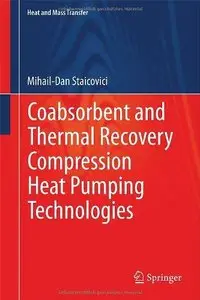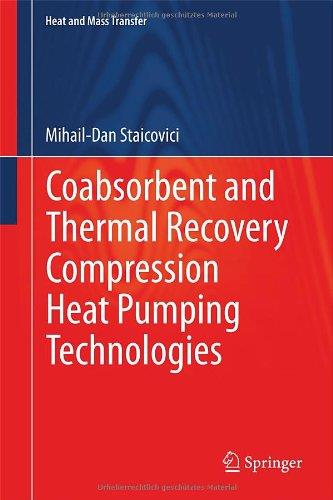Coabsorbent and Thermal Recovery Compression Heat Pumping Technologies By Mihail-Dan Staicovici
2014 | 501 Pages | ISBN: 3642546838 | PDF | 29 MB
2014 | 501 Pages | ISBN: 3642546838 | PDF | 29 MB
This book introduces two of the most exciting heat pumping technologies, the coabsorbent and the thermal recovery (mechanical vapor) compression, characterized by a high potential in primary energy savings and environmental protection. New cycles with potential applications of nontruncated, truncated, hybrid truncated, and multi-effect coabsorbent types are introduced in this work. Thermal-to-work recovery compression (TWRC) is the first of two particular methods explored here, including how superheat is converted into work, which diminishes the compressor work input. In the second method, thermal-to-thermal recovery compression (TTRC), the superheat is converted into useful cooling and/or heating, and added to the cycle output effect via the coabsorbent technology. These and other methods of discharge gas superheat recovery are analyzed for single-, two-, three-, and multi-stage compression cooling and heating, ammonia and ammonia-water cycles, and the effectiveness results are given. The author presents absorption-related topics, including the divided-device method for mass and heat transfer analysis, and truncation as a unique method for a better source-task match. Along with advanced gax recovery, the first and second principles of COP and exergy calculation, the ideal point approaching (i.p.a.) effect and the two-point theory of mass and heat transfer, the book also addresses the new wording of the Laplace equation, the Marangoni effect true explanation, and the new mass and heat exchangers based on this effect. The work goes on to explore coabsorbent separate and combined cooling, heating, and power (CHP) production and advanced water-lithium bromide cycle air-conditioning, as well as analyzing high-efficiency ammonia-water heat-driven heating and industrial low-temperature cooling, in detail. Readers will learn how coabsorbent technology is based on classic absorption, but is more general. It is capable of offering effective solutions for all cooling and heating applications (industry, agriculture, district, household, etc.), provided that two supplying heat-sink sources with temperatures outdistanced by a minimum of 12-15ºC are available. This book has clear and concise presentation and illustrates the theory and applications with diagrams, tables, and flowcharts.



